Review: Box.net Offers Multiple Storage Solutions
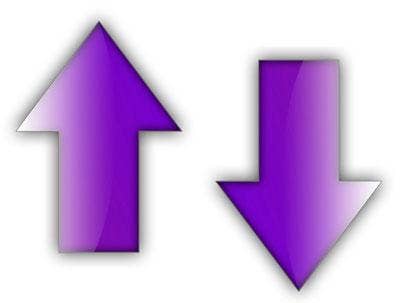
Online storage is nothing new, with offerings from Yahoo!, Google, Microsoft and a slew of smaller sites. Box.net, however, presents solution providers with solid business opportunities to enhance their solution and offerings.
Box.net offers both free and fee-based accounts, with varying amounts of storage depending on the account level. Lite accounts are free and have 1 Gbyte of space. Individual and Business accounts are fee-based and have 5 Gbytes and 15 Gbytes, respectively. Enterprise accounts are customized accounts based on how much storage the user or company needs.

This is the dashboard, the main screen that appears when a user logs into Box.net. The boxes are helpful for organizing files and general statistics. This screen is visible to all logged in users, except Workgroup users (more on that later).

My Box is the private storage area. These files can be uploaded using normal file-browsing features, or drag-and-drop, if the latest version of Java is installed. When Channel Test Center initially tried to upload files using drag-and-drop, it didn't work, but we didn't see any error messages. The problem was resolved after Java was updated.
A message explaining what was wrong, or even some text next to the link saying, "Requires most recent version of Java" would have been nice.
For users, this is the central area for all data. The drag-and-drop, when it worked, was the best feature.
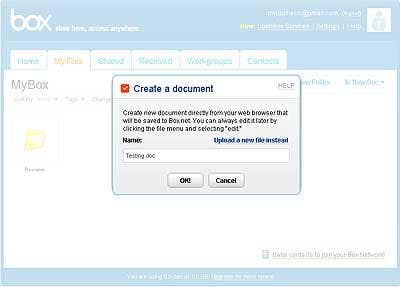
Box.net is not just a place to store files, but also a platform. Third-party providers offer their applications to Box.net users as "services" -- add-ins that give extra functionality. Each account comes automatically with Zoho and Picnik enabled. With Zoho, users can create documents and spreadsheets from inside their Box.net accounts.
It's not necessary to have the files created locally and then uploading, which is handy if a file needs to be created and shared immediately.
The following services are available through Box.net: Audodesk Freewheel, blog posting software, Echosign, eFax, Myxer, Picnik, Scribd, Snipshot, Thinkfree, Twitter, Zazzle and Zoho.
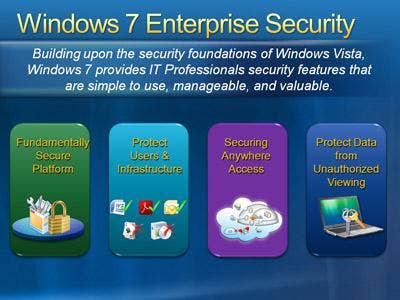
All services that create and edit files -- such as Zoho -- open in a separate window. Once the file is saved, the My Box space is updated with the new file that had been created. Removing the intermediate step greatly simplifies the process for user on the go.
Once the files are in My Box, there are more options available under the triangle-button.

Each file or folder can be tagged and sorted. There are three ways to list the files -- large icons, small icons, and detail. The search function can search for partial and full filenames, look at tags and search inside shared files.

Users have multiple options for file and folder sharing in Box.net. The basic share is e-mailing a link to the file that recipients can access. There's also the option to publish the file, such as on a blog, or to create a widget for other web pages to display. And finally, users have a public Box that's separate from the My Box space. The public area lists all the files that are accessible to others.

The public Box is a great business tool. Solution providers can keep files that customers need, such as documentation, updates, and informational specs, available for download. This page can be customized to some extent, such as the URL. This public area is a good way to have a safe and easy place to download files from.

A shared file, or a group of files, can be tagged for easy searching. Solution providers can also keep track of how many times their update patches have been downloaded, add new files to this group, and decide when to stop sharing the file.
Received files are kept under the "Received" tabs and are helpful for keeping track of what other Box.net users have sent.
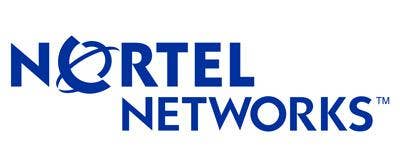
Users with Business accounts have an added feature: Workgroups. While the tab exists for all users, only Business accounts can take advantage of this. Workgroups specify a specific set of files and folders that can be seen by a subset of users, created by the Business user. The storage pool is shared amongst the sub-users, who do not have a full Box.net account.
The user creates sub-users under the Workgroups tab, assigns them passwords, and determines their access level (full, read, read/write). In this example, this user is sharing the files and folders in the My Box area with three other sub-users. There is no file-level access -- all files are visible to all sub-users with access to Workgroups.
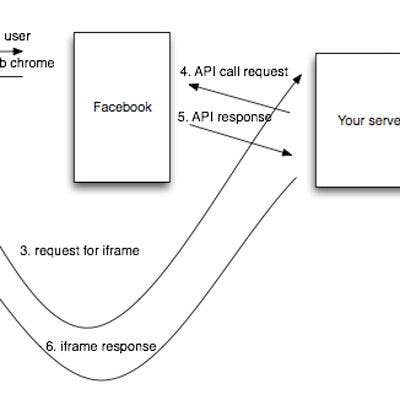
The sub-user does not have a full Box.net account, so no private My Box space exists. Solution providers can use the Workgroup feature to provide files to their customers that are not available to the general public. The public Box is open to anyone, but using the Workgroup feature requires the sub-user to log in to Box.net using the credentials provided by the user.
The sub-user is not associated with a particular e-mail address (regular Box.net accounts are tied to e-mail addresses), so multiple individuals can use the sub-user login to access the workgroup.

Solution providers can submit their products to Box.net as a service that other users will have access to. Box.net has an API that can be used to add an application or service to OpenBox. Users can then add the service to their accounts.
Box.net can be used to create a storage solution for the very small customer, or as a file-distribution mechanism from solution providers to customers, or as a platform to attract new users to a specific application.

The application offers a lot of possibilities. For customers, storage is available for a very affordable price, and for businesses, there's the option to either share data with anyone or with a specified set of users, and in various ways.
There is a social networking aspect, as users can subscribe to other users' public boxes to see what they are offering. Box.net also can be accessed from mobile devices.